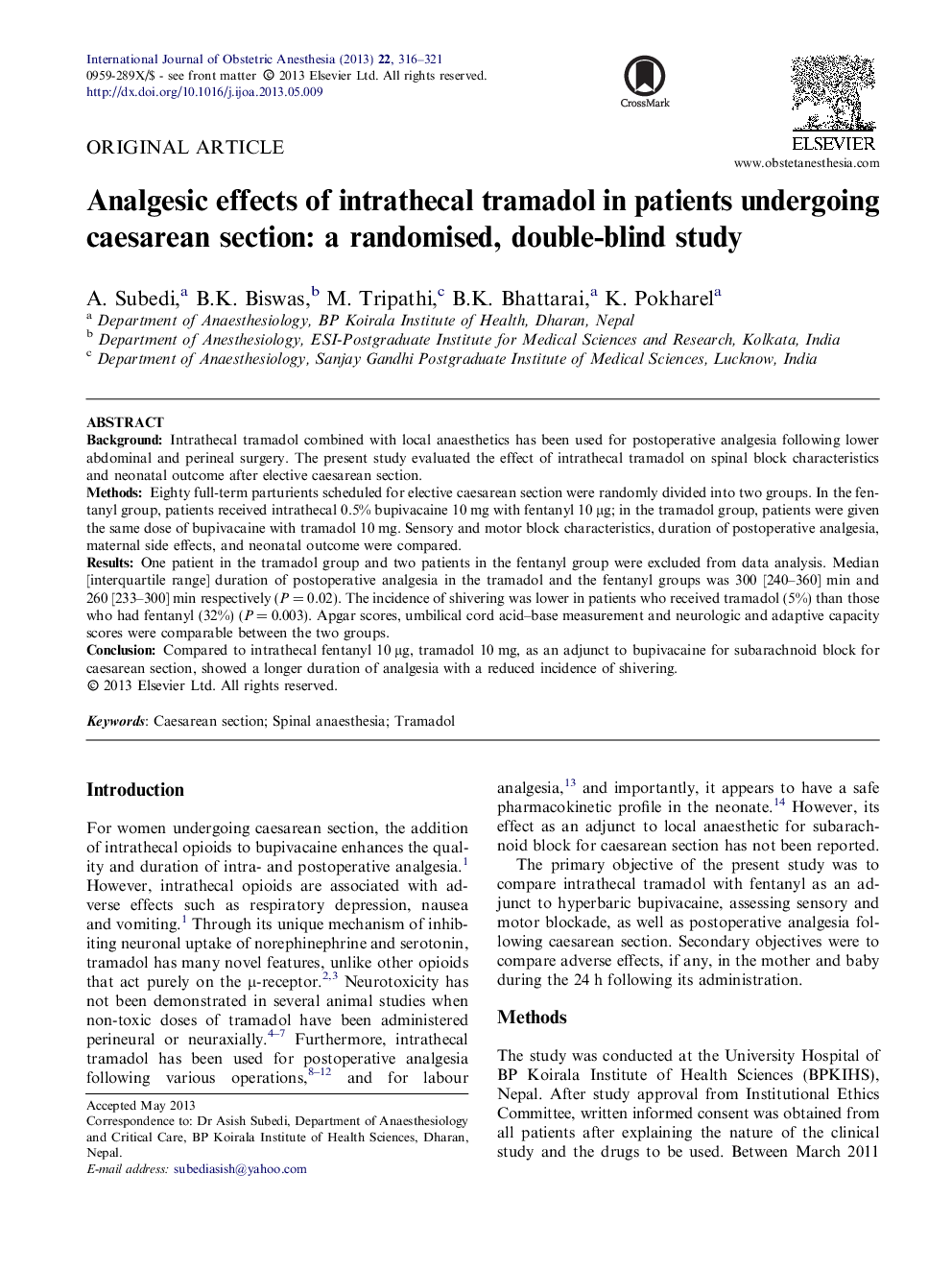| Article ID | Journal | Published Year | Pages | File Type |
|---|---|---|---|---|
| 2757810 | International Journal of Obstetric Anesthesia | 2013 | 6 Pages |
BackgroundIntrathecal tramadol combined with local anaesthetics has been used for postoperative analgesia following lower abdominal and perineal surgery. The present study evaluated the effect of intrathecal tramadol on spinal block characteristics and neonatal outcome after elective caesarean section.MethodsEighty full-term parturients scheduled for elective caesarean section were randomly divided into two groups. In the fentanyl group, patients received intrathecal 0.5% bupivacaine 10 mg with fentanyl 10 μg; in the tramadol group, patients were given the same dose of bupivacaine with tramadol 10 mg. Sensory and motor block characteristics, duration of postoperative analgesia, maternal side effects, and neonatal outcome were compared.ResultsOne patient in the tramadol group and two patients in the fentanyl group were excluded from data analysis. Median [interquartile range] duration of postoperative analgesia in the tramadol and the fentanyl groups was 300 [240–360] min and 260 [233–300] min respectively (P = 0.02). The incidence of shivering was lower in patients who received tramadol (5%) than those who had fentanyl (32%) (P = 0.003). Apgar scores, umbilical cord acid–base measurement and neurologic and adaptive capacity scores were comparable between the two groups.ConclusionCompared to intrathecal fentanyl 10 μg, tramadol 10 mg, as an adjunct to bupivacaine for subarachnoid block for caesarean section, showed a longer duration of analgesia with a reduced incidence of shivering.
